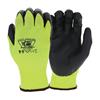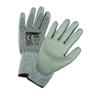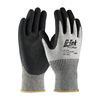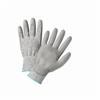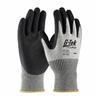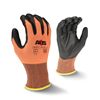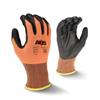In Stock
Brand
Size
Color
Length
Material
Palm Material
Style
Type
Unit Size: 1
Availability:
Unit Size: 1
Availability:
Unit Size: 1
Availability:
Unit Size: 1
Availability:
Unit Size: 1
Availability:
Unit Size: 1
Availability:
Unit Size: 1
Availability:
Unit Size: 1
Availability:
Unit Size: 1
Availability:
Unit Size: 1
Availability:
Unit Size: 1
Availability:
Unit Size: 1
Availability:
Unit Size: 1
Availability:
Unit Size: 1
Availability:
FAQs | Industrial Cut-Resitant Gloves
What are industrial cut resistant gloves?
Industrial cut resistant gloves are specialized personal protective equipment designed to protect workers from cuts, punctures, and abrasions in high-risk industries.
How do I choose the right glove for my tasks?
To choose the right glove, assess the hazard level in your workplace, match the glove's cut resistance to the task's requirements, consider comfort and dexterity, and ensure proper sizing and fit.
Are cut resistant gloves suitable for all industries?
Yes, cut resistant gloves find applications in various industries, including metalworking, glass handling, construction, woodworking, and food processing.
Can I reuse cut resistant gloves?
The reuse of cut resistant gloves depends on the extent of wear and tear. It's essential to inspect the gloves regularly and replace them if damaged.
How often should I replace cut resistant gloves?
The replacement frequency of cut resistant gloves varies based on usage and condition. Generally, gloves should be replaced when they show signs of wear or damage.
Can cut resistant gloves protect against all types of cuts?
While cut resistant gloves offer excellent protection against most cuts, they may not be 100% effective against extremely sharp or serrated blades. It's crucial to choose the appropriate glove for specific tasks.
Industrial Cut Resistant Gloves: A Shield Against Cuts and Punctures
Industrial cut resistant gloves are a vital component of personal protective equipment (PPE) used in various industries where sharp tools, machinery, and materials are involved. These gloves are engineered using advanced materials and technology, providing an effective barrier against cuts, slashes, and abrasions. Let's dive into the key aspects of these safety gloves:
Understanding the Technology Behind Cut Resistance
Materials Used
The key to the effectiveness of cut-resistant gloves lies in the materials used to construct them. High-performance fibers, such as para-aramids (like Kevlar®), high-performance polyethylene (HPPE), and stainless-steel fibers, are the primary materials employed.
Yarn Composition
The yarn composition plays a crucial role in determining the glove's strength and resistance. Manufacturers use various combinations of cut-resistant materials to achieve the desired level of protection.
Fiber Blending Techniques
To optimize the glove's performance, manufacturers use different fiber blending techniques, combining materials to enhance their cut resistance while maintaining flexibility and comfort.
Weaving and Knitting Patterns
The weaving and knitting patterns of the glove impact its cut resistance. The design determines how well the glove can withstand cutting forces.
Coating Technology
Some cut-resistant gloves come with coatings, such as polyurethane, nitrile, or latex, to improve grip and provide additional protection against liquids or chemicals.
Additional Reinforcements
In certain high-risk applications, gloves may feature additional reinforcements like TPR (thermoplastic rubber) padding or impact-resistant materials for added protection against impacts.
Cut resistance in gloves is achieved through the use of specialized fibers with high tensile strength. These fibers, such as Kevlar, Dyneema, and Spectra, are incorporated into the glove's construction to create a protective layer that can withstand sharp objects. Understanding the technology behind these cut-resistant fibers is essential in choosing the right glove for specific applications.
Factors Influencing Cut Resistance Levels
The cut resistance levels of industrial gloves are determined by industry standards like EN 388 and ANSI/ISEA. These standards categorize gloves based on their ability to withstand cuts from different levels of blade sharpness. Additionally, factors like glove thickness and material composition play a role in determining the overall cut resistance of the glove.
Applications of Industrial Cut Resistant Gloves
The versatility of industrial cut resistant gloves makes them suitable for a wide range of applications. From metalworking and glass handling to construction and woodworking, these gloves offer unparalleled protection in hazardous environments.
Types of Cut Resistant Gloves
Industrial cut resistant gloves come in various types, each designed for specific tasks and industries. Seamless knitted gloves offer excellent dexterity, while coated cut resistant gloves provide enhanced grip. Leather cut resistant gloves are popular in heavy-duty applications.
Selecting the Right Industrial Cut Resistant Glove
Choosing the appropriate glove for your specific needs requires considering various factors. Here are some essential aspects to keep in mind:
Assessing the Hazard Level
Conducting a thorough risk assessment and identifying potential hazards in the workplace is the first step in selecting the right glove. Understanding the specific tasks and materials involved will help determine the appropriate cut resistance level required.
Matching Glove Cut Resistance to the Task
Different tasks may require gloves with varying cut resistance levels. For instance, handling sharp blades demands a higher cut-resistant level compared to tasks involving light materials. Matching the glove's cut resistance to the task at hand is crucial for optimal safety.
Consideration of Comfort and Dexterity
Comfort and dexterity are essential for ensuring workers wear their gloves consistently. An ergonomic design and finger flexibility contribute to better hand movements, reducing fatigue during prolonged use.
Sizing and Fit
An ill-fitting glove can compromise safety and comfort. Providing workers with gloves that fit properly ensures a snug and secure fit, preventing accidental glove removal and potential injuries.
Industrial cut resistant gloves play a vital role in safeguarding workers from potential injuries in high-risk industries. Understanding the technology behind these gloves, assessing the hazard level, and choosing the right glove for specific tasks are key factors in ensuring optimal safety. Brands like PIP, G-Tek, and Radians are among the top choices for reliable and high-performance industrial cut resistant gloves. By prioritizing worker safety and investing in quality PPE, employers demonstrate their commitment to creating a secure and productive work environment.

